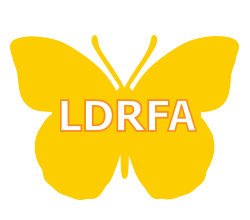- Education scholars say youth are duped by sponsored content and don’t always recognize political bias of social messages.
-
- Stanford University
-
- November 23, 2016

- When it comes to evaluating information that flows across social channels or pops up in a Google search, young and otherwise digital-savvy students can easily be duped, finds a new report from researchers at Stanford Graduate School of Education.
-
Table of Contents
ToggleThe report, released this week by the Stanford History Education Group (SHEG), shows a dismaying inability by students to reason about information they see on the Internet, the authors said. Students, for example, had a hard time distinguishing advertisements from news articles or identifying where information came from.“Many people assume that because young people are fluent in social media they are equally perceptive about what they find there,” said Professor Sam Wineburg, the lead author of the report and founder of SHEG. “Our work shows the opposite to be true.”The researchers began their work in January 2015, well before the most recent debates over fake news and its influence on the presidential election.The scholars tackled the question of “civic online reasoning” because there were few ways to assess how students evaluate online information and to identify approaches to teach the skills necessary to distinguish credible sources from unreliable ones.The authors worry that democracy is threatened by the ease at which disinformation about civic issues is allowed to spread and flourish. -
“Many of the materials on web credibility were state-of-the-art in 1999. So much has changed but many schools are stuck in the past,” said Joel Breakstone, the director of SHEG, which has designed social studies curriculum that teaches students how to evaluate primary sources. That curriculum has been downloaded 3.5 million times, and is used by several school districts.
-
-
The new report covered news literacy, as well as students’ ability to judge Facebook and Twitter feeds, comments left in readers’ forums on news sites, blog posts, photographs and other digital messages that shape public opinion.The assessments reflected key understandings the students should possess such as being able to find out who wrote a story and whether that source is credible. The authors drew on the expertise of teachers, university researchers, librarians and news experts to come up with 15 age-appropriate tests — five each for middle school, high school and college levels.“In every case and at every level, we were taken aback by students’ lack of preparation,” the authors wrote.In middle school they tested basic skills, such as the trustworthiness of different tweets or articles.One assessment required middle schoolers to explain why they might not trust an article on financial planning that was written by a bank executive and sponsored by a bank. The researchers found that many students did not cite authorship or article sponsorship as key reasons for not believing the article.Another assessment had middle school students look at the homepage of Slate. They were asked to identify certain bits of content as either news stories or advertisements. The students were able to identify a traditional ad — one with a coupon code — from a news story pretty easily. But of the 203 students surveyed, more than 80 percent believed a native ad, identified with the words “sponsored content,” was a real news story.
- For more: https://www.sciencedaily.com/releases/2016/11/161123145253.htm

Facebook
Twitter
LinkedIn
Email

